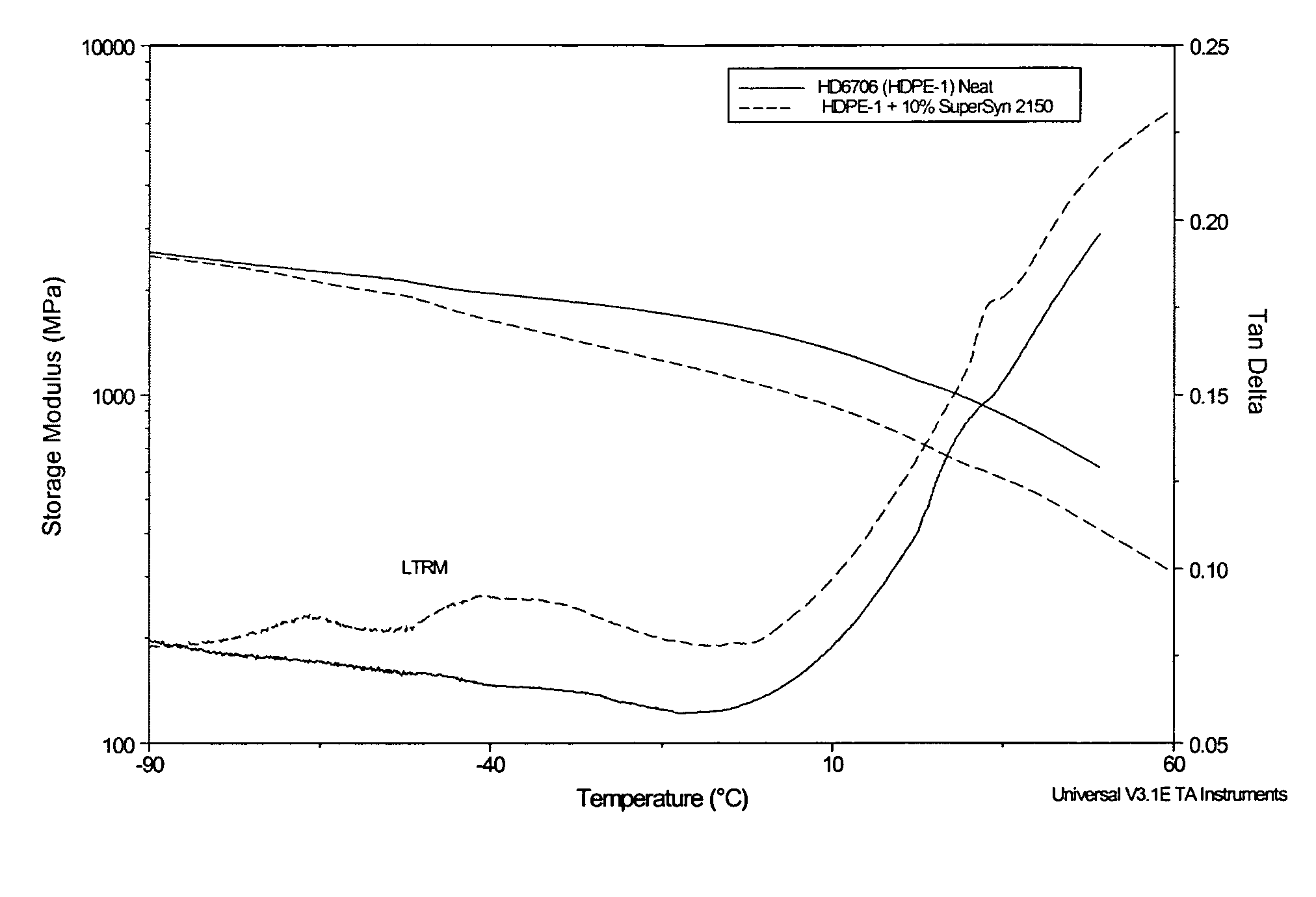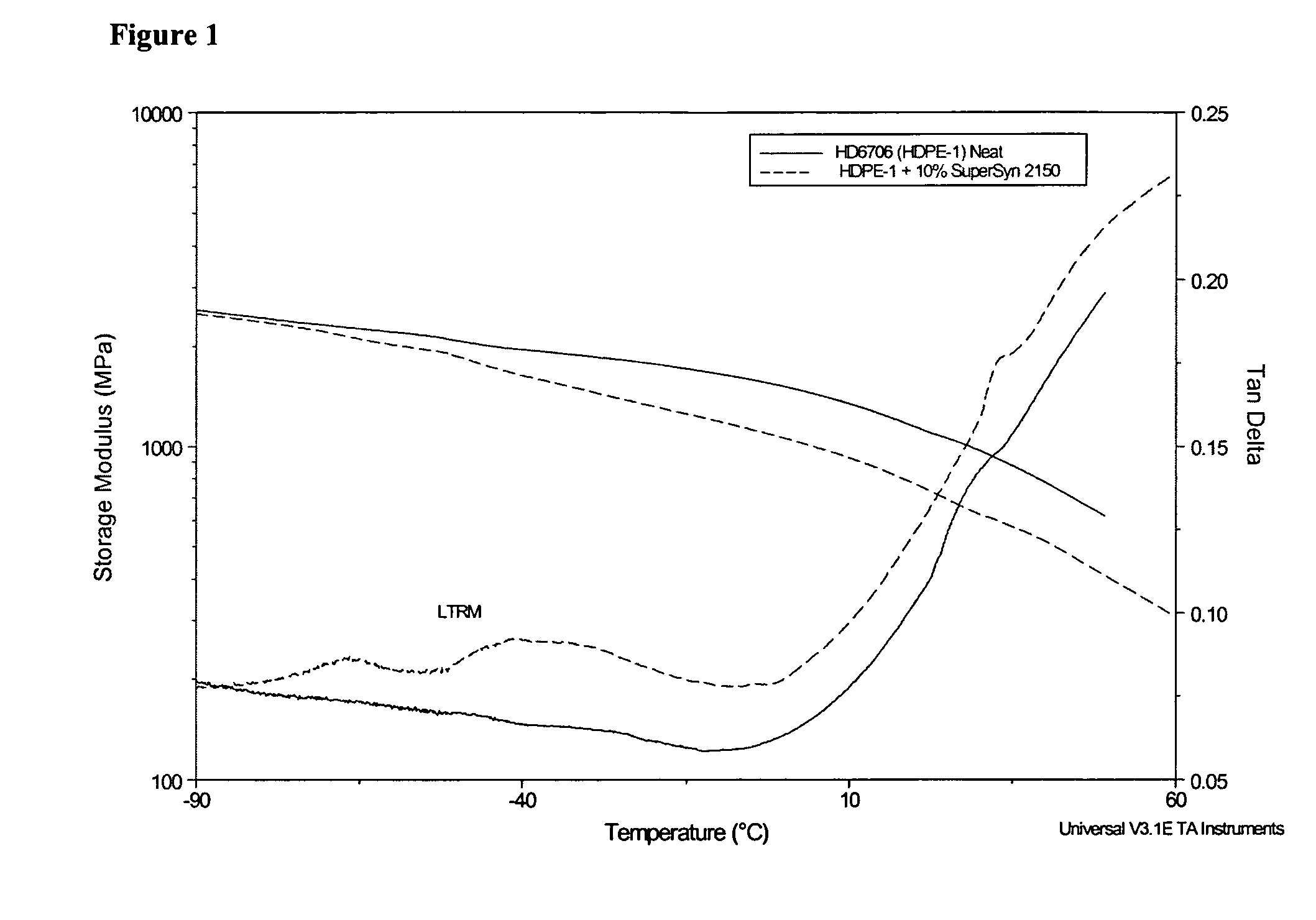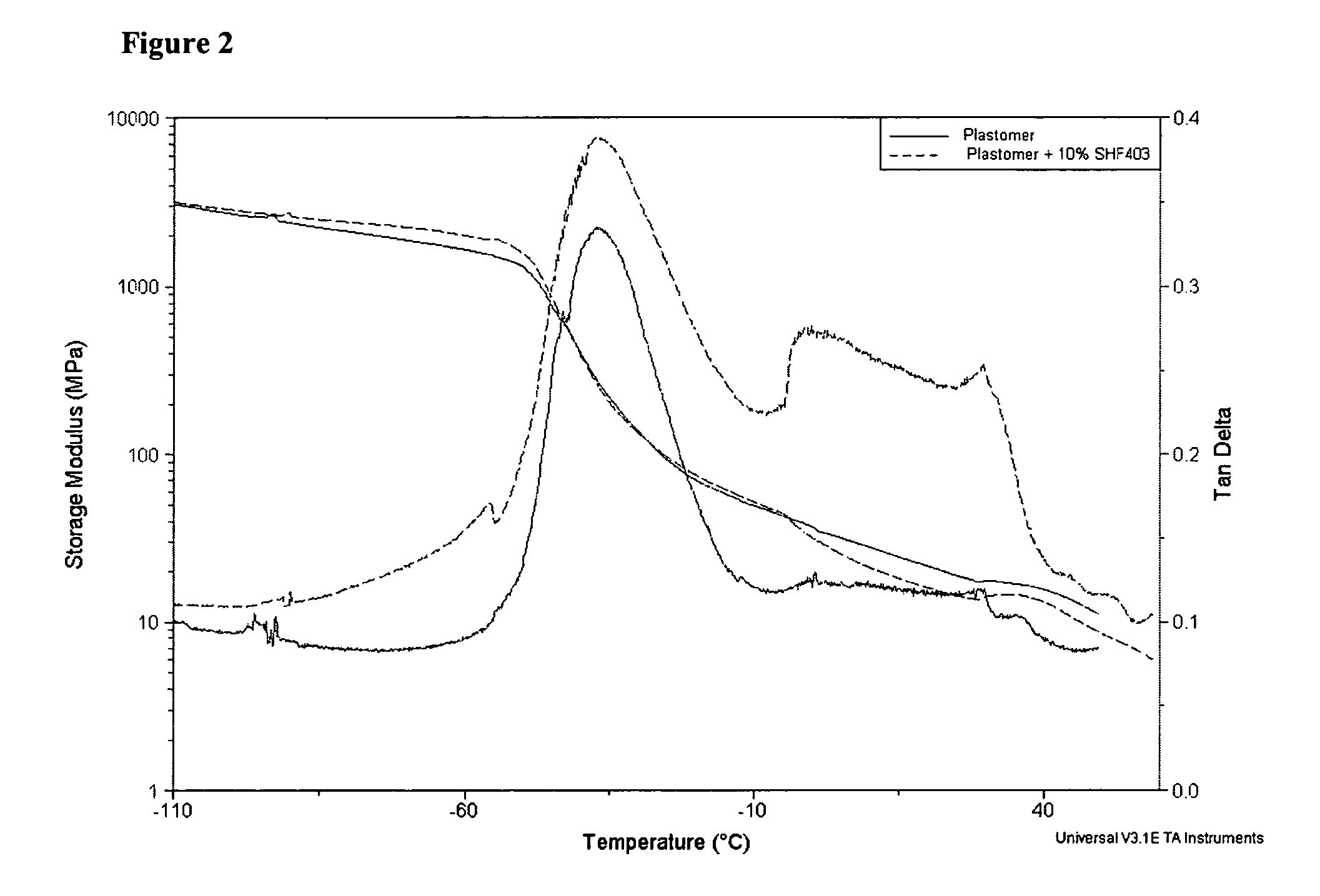Modified polyethylene compositions
a technology of polyethylene composition and polyethylene, which is applied in the direction of granular delivery, medical preparations, pharmaceutical delivery mechanisms, etc., can solve the problems of reducing the melting point, both approaches can have detrimental effects on the final physical properties of the polyolefin article, and the use of these additive compounds typically does not preserve the optical properties (e.g., color and or transparency) of the polyolefin
- Summary
- Abstract
- Description
- Claims
- Application Information
AI Technical Summary
Benefits of technology
Problems solved by technology
Method used
Image
Examples
examples
[0372]The present invention, while not meant to be limited by, may be better understood by reference to the following examples and tables. The ethylene polymers and modifiers used in these examples are described in Tables 3-5.
Sample Preparation Methods
[0373]Samples were generated by blending the desired polyethylene composition, followed by fabrication into an article for testing.
Blending
[0374]Two methods were used to generate examples of modified blends. The first method, which is referred to as the Extruder Method, involved “dry blending” polymer granules or pellets with appropriate amounts of modifier and an additive package (including, for example, antioxidants) in a tumble blender to achieve a homogeneous mixing of components at the desired modifier and additive concentrations. This was followed by compounding and pelletizing the blend using an extruder at an appropriate extrusion temperature above the melting point of the polymer, typically in the range of 150 to 220° C. depen...
PUM
| Property | Measurement | Unit |
|---|---|---|
| kinematic viscosity | aaaaa | aaaaa |
| glass transition temperature | aaaaa | aaaaa |
| weight % | aaaaa | aaaaa |
Abstract
Description
Claims
Application Information
 Login to View More
Login to View More - R&D
- Intellectual Property
- Life Sciences
- Materials
- Tech Scout
- Unparalleled Data Quality
- Higher Quality Content
- 60% Fewer Hallucinations
Browse by: Latest US Patents, China's latest patents, Technical Efficacy Thesaurus, Application Domain, Technology Topic, Popular Technical Reports.
© 2025 PatSnap. All rights reserved.Legal|Privacy policy|Modern Slavery Act Transparency Statement|Sitemap|About US| Contact US: help@patsnap.com



